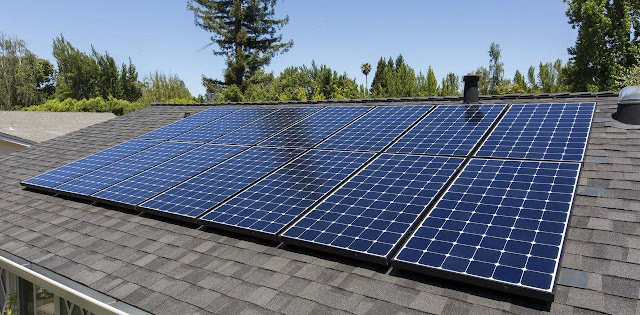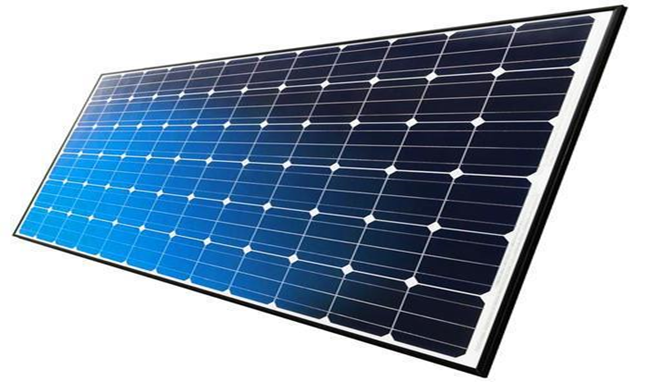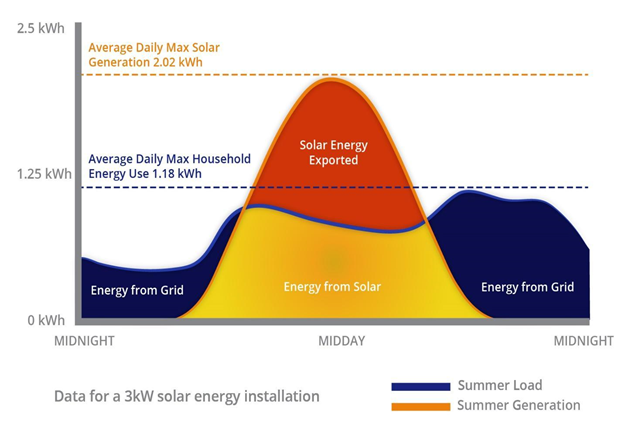Choose the best solar panel for your home (Polycrystalline or Monocrystalline)
Deciding
the most suitable solar panel for your home is an integral part of the entire
planning process for its installation further. Are you pondering which solar
panel system will be the right choice for you? Then you have landed on the apt
place!
In
this article, we will break down comparisons and variations between the two
varied categories of solar
panels, starting from prices,
aesthetics, productivity and more to assist you in determining the most
effective choice for your solar installation Sydney.
Monocrystalline
Solar Panel –
Monocrystalline
type solar panels are at the top solar retailer Sydney when it comes to solar photovoltaic technology available to the
consumer, they are the most expensive type and have some of the highest
efficiency ratings of 15-20%. Made of ultra-pure silicon nuggets cut into
wafers, which are then assembled into a solar cell, the thin silver lines
running through the cells and panels are conduits that carry electric current.
Some
monocrystalline panel builders use high-tech methods to further increase their
efficiencies, such as laser gouging and back-surface fields, which have
increased efficiency by up to 20% and above units. However, this has led to an
increase in price by 29% when compared to Monocrystalline units.
Polycrystalline
Solar Panel –
Polycrystalline
PV cells are made of silicon which is not as pure as monocrystalline cells. The
silicon is molded into square blocks and then wafers are cut from those blocks,
giving them a distinct speckled appearance. When mounted on a frame to form a
solar panel, there is more surface area to capture the sun due to its square
shape.
●
Energy output –
On
average, the best solar company in
Sydney provides monocrystalline panels that produce
17% more energy than polycrystalline panels. This is largely due to their
higher efficiency rate. Monocrystalline also usually comes with better
warranties, an important consideration while investing in a new solar panel
system.
Polycrystalline
solar panels offer a slightly lower energy output than monocrystalline panels.
A standard poly panel has an efficiency rating of 12 to 16 percent, while
monocrystalline ranges from 14 to 19 percent.
●
Cost –
One
of the biggest differences between monocrystalline solar panels and
polycrystalline solar panels is their price. A set of three monocrystalline PV
modules will likely be around $2 per watt, while a comparable set of
polycrystalline PV modules will cost closer to $3 per watt. This difference can
equate to about 20 percent more in installation costs while using
polycrystalline over monocrystalline.
●
Shape and aesthetics –
One
of the most notable differences between monocrystalline solar panels and
polycrystalline solar panels is their shape. While both types come in
rectangular shapes, monocrystalline have a more distinctive diamond look to them.
As
for aesthetics, some prefer either shape, but many homeowners and businesses
prefer plain Jane rectangular panels. At least that’s what we found through
years of research into solar panel types.
●
Washing –
While
both monocrystalline and polycrystalline are generally easier to clean than
other panel types, it can be difficult to clean some panels made from a thin
film.
Monocrystalline
Solar Cell vs. Polycrystalline Solar Cell: Quick Facts –
•
Monocrystalline solar cells are more efficient because they are harvested from
a single source of silicon.
•
Polycrystalline solar cells combine with multiple sources of silicon and are
slightly less efficient.
•
Thin film technology costs less than mono or poly panels but is also less
efficient. It is mainly used in commercial applications on a large scale.
•
P-type cells are less resistant to light-induced degradation than N-type cells.
•
PERC (Passivated Emitter and Rear Contact) cells add a reflective layer to give
the cell a second chance to absorb light.
•
Half-cut cells improve the efficiency of solar cells by using smaller ribbons
to carry the electric current, thereby reducing the resistance in the circuit.
•
Bifurcated solar panels absorb light on either side of the panel.
Monocrystalline
and Polycrystalline solar panels are both efficient, reliable, and
cost-effective. They have low energy costs but at different levels.
Monocrystalline panels generate more power per square foot than polycrystalline
ones do. Monocrystalline modules are made of one uniform crystal type while
Polycrystalline are made from several smaller crystals.





Comments
Post a Comment